Heating batteries perform the function of heating the room. But their appearance does not always correspond to the general style of the interior in the room. To improve the attractiveness, special screens are used, which you can do yourself.
In addition to their decorative function, they protect devices from dirt and dust. Also, a high-quality decorative element is able to reduce the radiation of infrared spectra and improve heating efficiency.
Benefits of using decorative elements
Similar decorative elements are used for batteries for several reasons:
- Improving the aesthetic properties of the premises. For example, creating a beautiful accent in a room.
- Protective function against touching a hot battery. This is especially true if there are small children.
- Simplifies maintenance of radiators.
A multifunctional screen can be made in several versions:
- Flat - protects the battery located in a niche.
- A closed box is used when it is necessary to close the entire radiator.
- The hinged cover is designed to cover the radiator protruding from the windowsill.
Manufacturing materials
It is quite possible to make products with your own hands using various types of materials. The characteristics of the material determine its technical features.

For example, metal shutters can be painted in any color. They perform their protective functions perfectly and look great.
Using the perforation technique, you can create an unusual and interesting effect. The steel and aluminum model is very easy to install. The product made of wood looks very impressive in any interior.
For those who want to create a similar decoration element with their own hands, it is better to use the available materials:

- plastic;
- tree;
- metal;
- MDF and chipboard;
- glass.
Plastic
It is an inexpensive material with low thermal conductivity. It heats up unevenly and has little strength. Working with plastic is quite difficult. Plastic should be thick, as thin material has low strength.
May release toxic substances when heated. Products made from such raw materials are light in weight, resistant to moisture, not subject to corrosion and do not heat up much.
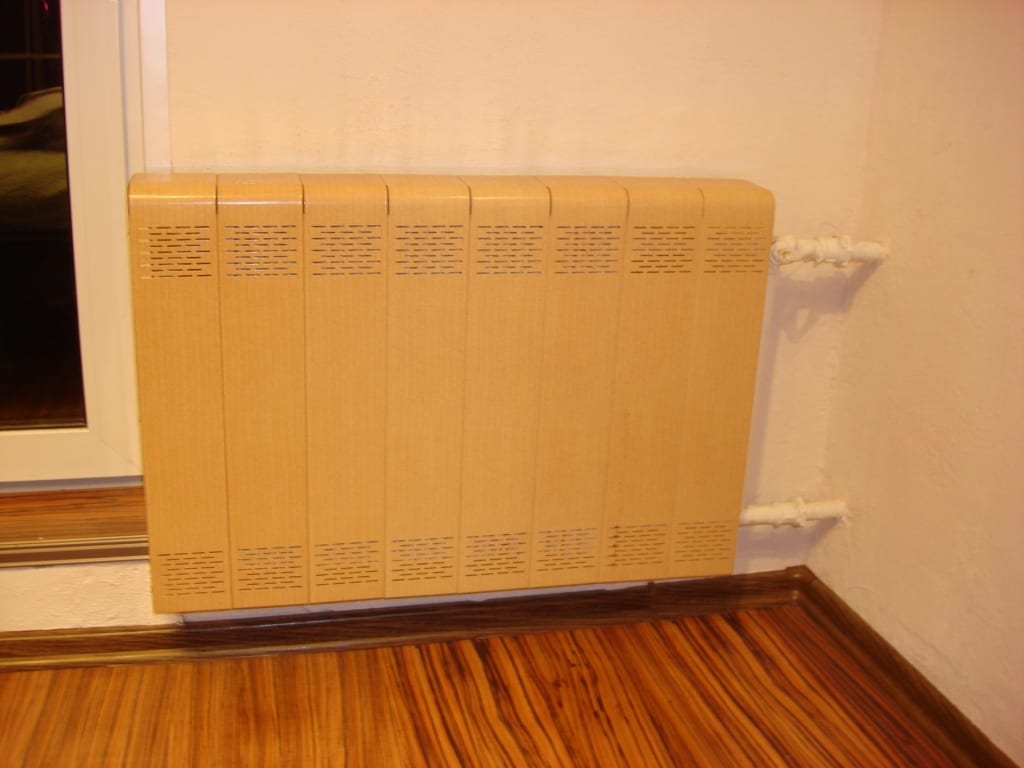
When choosing a material for a decorative product, one should remember not only the attractive appearance, but also the microclimate in the room. Therefore, it is necessary to select a damper with a minimum surface and leave a small space from the floor for air movement.
Wooden products can be painted in any color and decorated with artistic painting. Four types of crates can be made from wood. For example, rhombus, circles, cage and in the form of blinds. The interior with wooden elements looks very aesthetically pleasing and goes well with other materials.
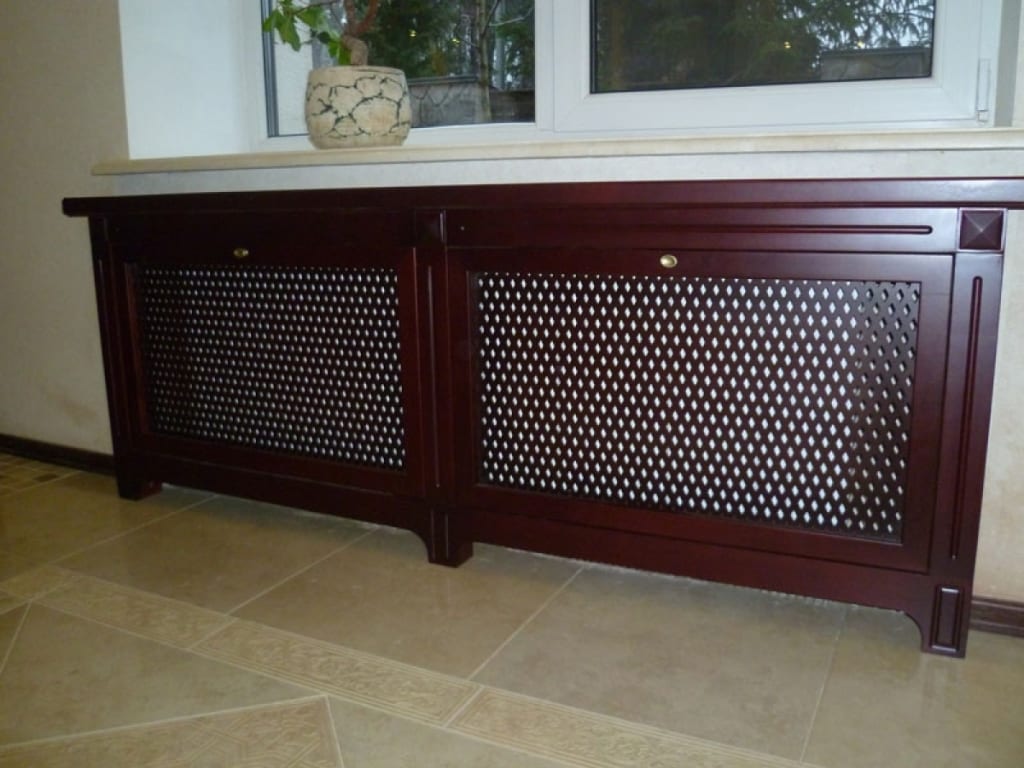
The best types of wood for such products are beech and oak. They are durable and reliable. They can be both tinted and painted with enamel. So that the gratings do not interfere with the circulation of heat, they are not mounted on the floor, but at some distance above its surface. For better passage of warm air, certain holes are made in the upper part of the box.
Fences at an affordable price can be made of rack fabric. This is an excellent stylish element that perfectly passes warm air and performs a protective function.
Metal
Metal has a high thermal conductivity, but you need to be able to work with it. This is an excellent material for a homemade design. Two types of products can be made from it: stamped and by welding.
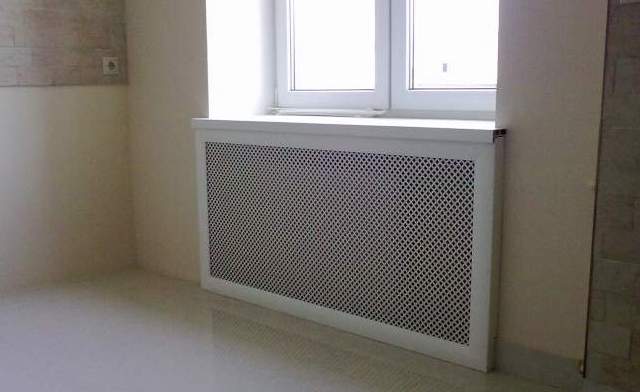
Stainless steel dampers look more elegant and beautiful. They can cover both part of the battery and the entire radiator. They are divided into 3 types: with two sidewalls, with one and without sidewalls. The choice of option depends on how the heating device is connected.
The metal element does not interfere with high-quality heat transfer. The box, made of aluminum or steel mesh, perfectly transmits heat. These products are very easy to install. They are decorated with various patterns. For example, an openwork lattice or a solid canvas with open space.
MDF and chipboard
MDF panels provide a wide variety for decoration.
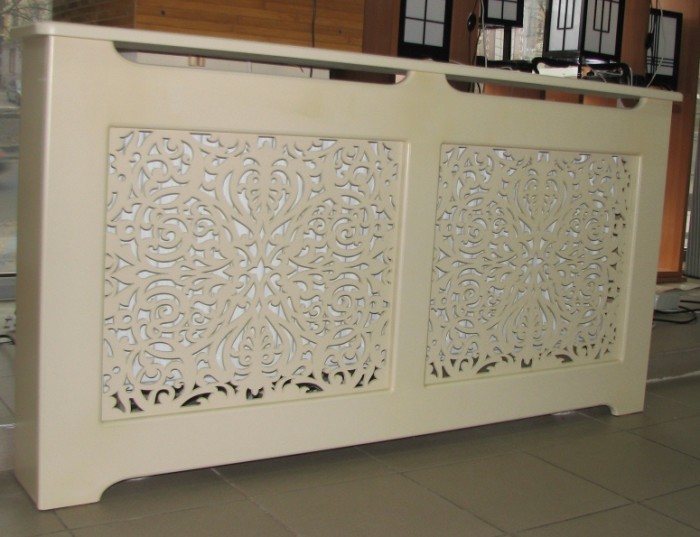
They are created from perforated parts equipped with a decorative frame. These models are suitable for different heating systems. They can decorate both cast-iron and bimetallic radiators.
This material can be used to make exclusive railings for radiators. Glass in this case can be stained glass and tempered. A certain pattern is applied to the surface. Such design elements are made of particularly durable raw materials with a wall thickness of at least 8 mm. They are almost impossible to break.
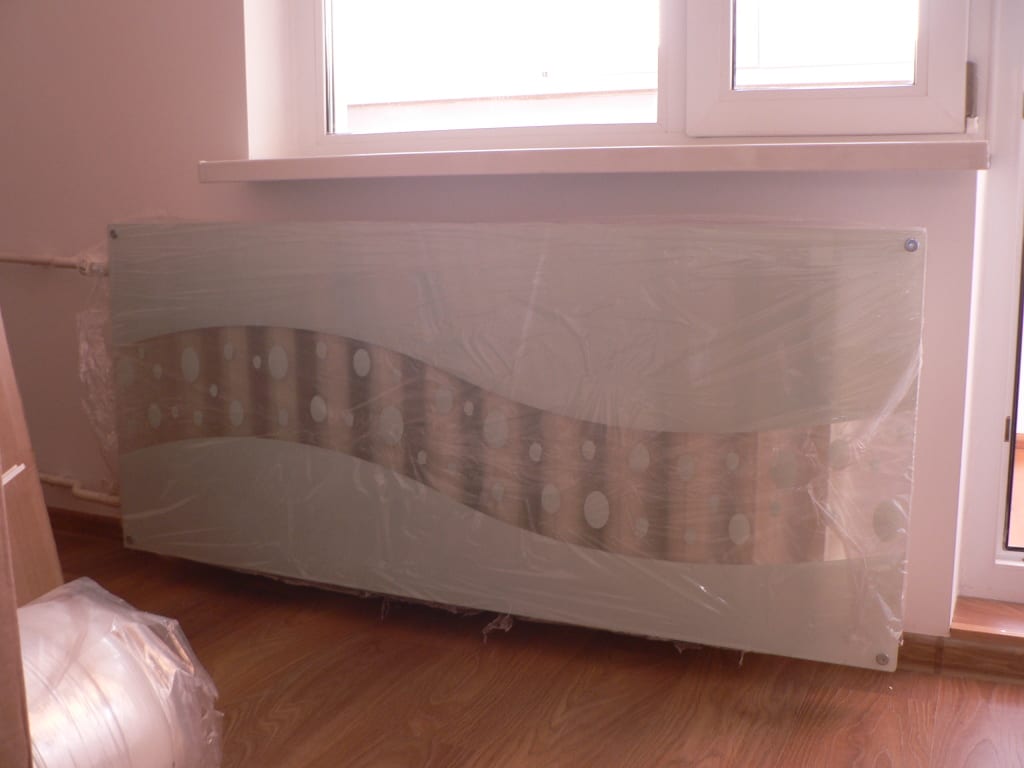
The edges of the product are carefully polished, which makes them safe and endows with great strength. A special substance is applied to the surface of the glass, which has protective properties and allows you to use ordinary detergent in the future.
Glass perfectly transmits the sun's rays and does not reduce convection. And if necessary, dismantling work is carried out very easily and quickly.
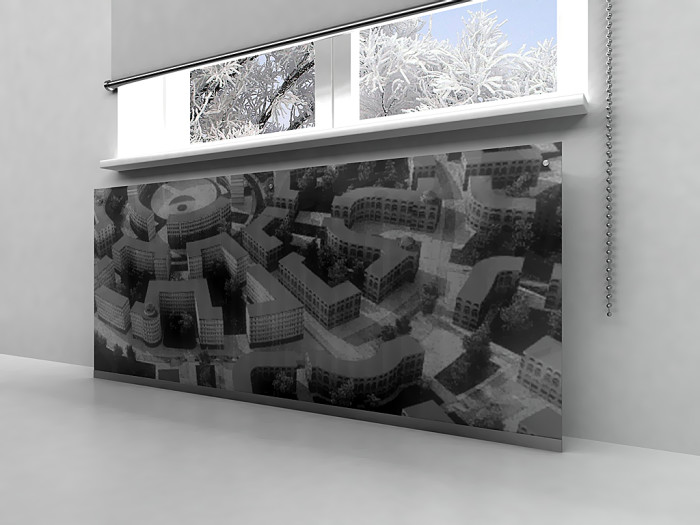
There is another type of glass - acrylic. Acrylic glass has a variety of colors and can be easily transformed. Screens can be matte, transparent and plain. LED lighting can be attached to them.
Manufacturing technology
Before proceeding with the manufacture of a battery fence, you should choose a suitable design: hinged or resting on the floor in the room.
Then a drawing is made, and tools with materials are selected.
Materials and tools
For manufacturing, you will need the following materials and tools:
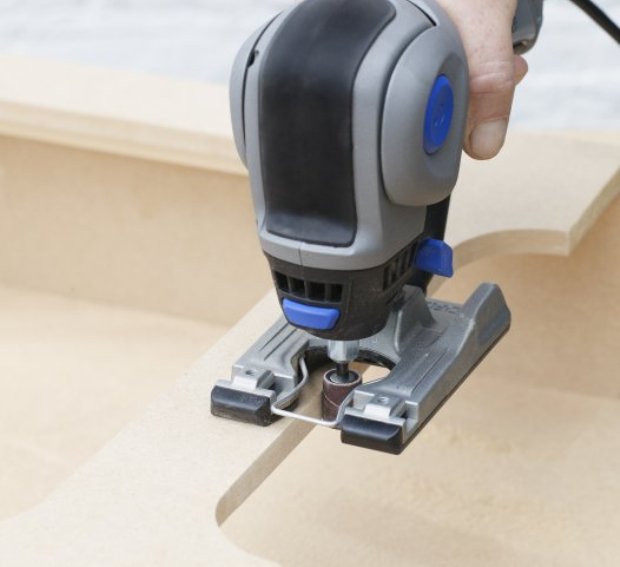
- Chipboard sheet.
- Special edge for finishing with adhesive thermal layer on the back.
- Screws and corners made of metal.
- Stapler with staples or small nails with a hammer.
- Iron.
- Sandpaper.
Marking and measurements
First you need to mark the location on the wall and the necessary measurements. We mark the attachment points for placing the panel. We make a simple schematic drawing with important dimensions.
From chipboard we make four walls for the frame. You can buy already made parts. We connect the walls with each other using metal corners.
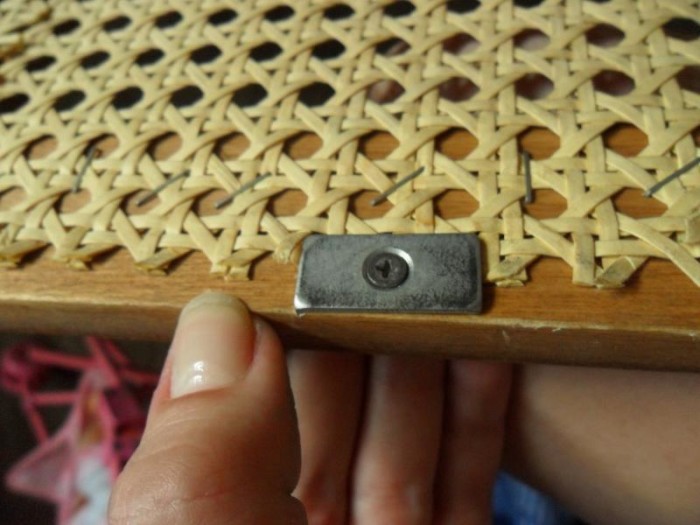
We make a lattice from the edge and fix its parts on the frame with the help of small nails and a furniture stapler. The length of the edging material is calculated by the formula L(edge length)=(a (product length)*b(width)*1.3)/c(edge width).
The holes on the grill must be of the same size, for this you need to make preliminary markings on the frame or a special template. On the front side, the grate must be heated with an iron at a high temperature. As a result of this procedure, the heated glue will connect the elements of the lattice at the intersections and give it greater rigidity.
The same edge must be used to finish the end parts of the frame. We apply the edge to the butt and smooth it with an iron. With a knife, cut off the protruding edges of the edge. The edges that stand out are polished with sandpaper.
If the screen is supposed to be located close to the wall, then we simply insert it. If a suspended version is planned, then a few more manipulations must be performed.
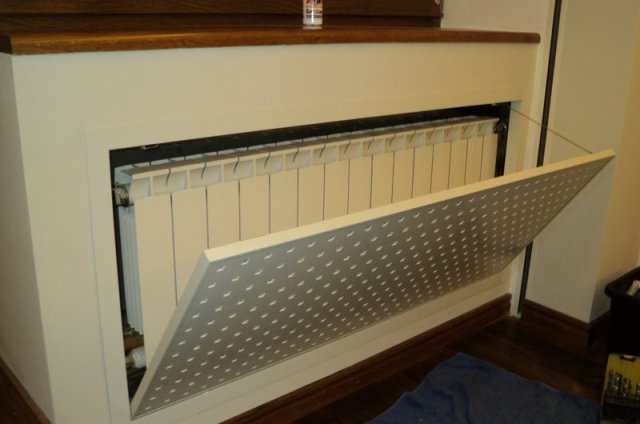
- In the frame, we make recesses at the points of docking with heating pipes. Then the decorative fence is put on the pipes with the help of special grooves.
- In the marked places you need to attach metal corners.
- Then we bend the edges of the corners 10 mm up and hang the panel made on the hooks obtained.
The enclosing screen is a great solution for various heating devices. If you do everything right and choose high-quality material, then you can create a wonderful element of decor yourself.
